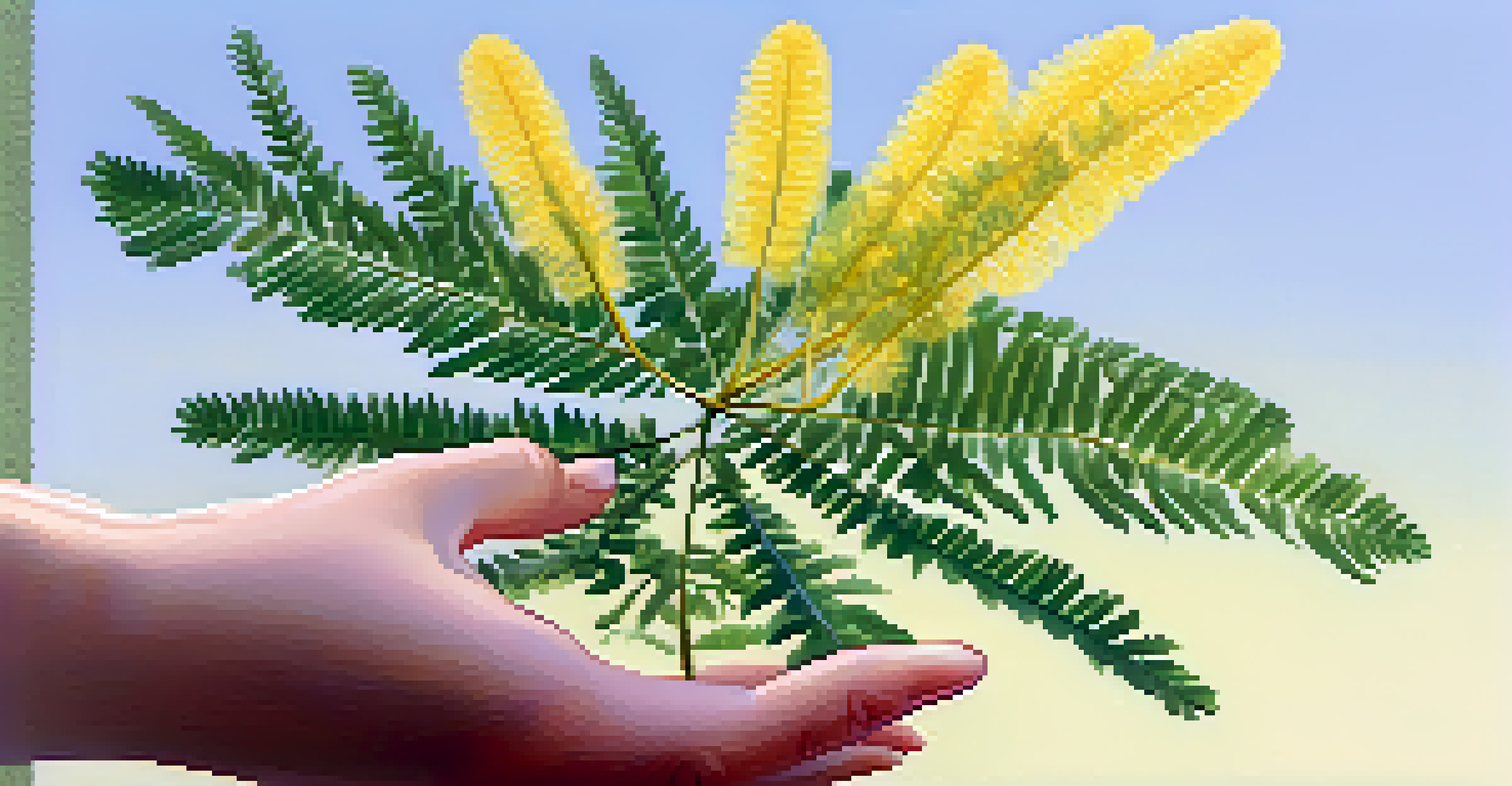Understanding Thigmotropism: Plants That Respond to Touch

What is Thigmotropism and Why It Matters
Thigmotropism is the directional growth of plants in response to touch or physical contact. This fascinating behavior is crucial for certain plants, as it helps them navigate their environment and find support. Think of it like a plant's way of reaching out to steady itself, similar to how we might grasp a railing when climbing stairs.
Plants are like people; they respond to their environment, and their growth is influenced by the conditions around them.
Plants that exhibit thigmotropism often use it to enhance their survival. For example, climbing plants like vines wrap around structures for support and to access sunlight. This unique adaptation showcases how plants have evolved to thrive in their surroundings, utilizing touch as a key sensory input.
The ability to respond to touch is not just about survival; it also plays a role in reproduction. Some plants need to attract pollinators or disperse seeds, and their ability to respond to external stimuli can enhance these processes. Understanding thigmotropism opens up fascinating insights into plant behavior and ecology.
How Thigmotropism Works at a Cellular Level
At the core of thigmotropism is a process called mechanoreception, where plants detect physical stimuli. When a plant's tendrils or stems touch an object, specialized cells sense the pressure, triggering a growth response. This is akin to how our skin senses touch, prompting us to react in various ways.

The response involves hormones, particularly auxins, which play a significant role in plant growth. When touch is detected, auxins redistribute themselves, causing the plant to grow more on one side than the other. This uneven growth results in the bending or twisting of the plant towards the touch stimulus.
Thigmotropism: Plants Respond to Touch
Thigmotropism is the growth of plants in response to touch, allowing them to find support and enhance survival.
This intricate system allows plants to adapt quickly to their environment, ensuring they can find support and maximize sunlight exposure. It's a remarkable example of how even the simplest organisms have complex systems that enable them to thrive in diverse conditions.
Examples of Thigmotropic Plants in Nature
One of the best-known examples of thigmotropism is found in climbing plants like the common bean and grapevines. These plants develop tendrils that wrap around nearby structures, allowing them to ascend and reach light. Imagine a climber using ropes and grips to scale a wall; that's essentially what these plants are doing.
Adaptation is the key to survival, and the ability to respond to touch is just one of the many ways plants have evolved.
Another fascinating example is the sensitive plant, Mimosa pudica, which responds to touch by folding its leaves. This rapid movement serves as a defense mechanism against herbivores, making the plant appear less appealing as a food source. It’s a fascinating adaptation that demonstrates how touch can influence plant behavior.
Even some non-climbing plants exhibit thigmotropism. For instance, the roots of certain plants can respond to obstacles in the soil, changing their growth direction to navigate around them. This shows that thigmotropism isn’t just for climbing; it's a broader survival strategy employed by various plant species.
The Role of Thigmotropism in Plant Survival
Thigmotropism plays a critical role in plant survival, especially for species that rely on physical support to grow. By climbing onto sturdy structures, these plants can access more sunlight, which is essential for photosynthesis. This ability to adapt their growth not only helps them thrive but also supports the entire ecosystem.
Additionally, thigmotropic responses can assist in maximizing water and nutrient uptake. When plants grow towards a structure, they can position themselves better to absorb rainwater or nutrients from the soil. This strategic growth is crucial in environments where resources may be limited.
Key Role in Plant Survival
This response enables plants to access sunlight and resources, crucial for their growth and adaptation in various environments.
In essence, thigmotropism allows plants to be resourceful and adaptive, showcasing their remarkable ability to respond to their surroundings. This adaptability is vital for their continued survival in the ever-changing natural world.
Thigmotropism vs. Other Plant Responses
While thigmotropism involves growth in response to touch, it’s important to differentiate it from other plant responses like phototropism and gravitropism. Phototropism is the growth of plants toward light, helping them maximize photosynthesis. In contrast, gravitropism is the plant's response to gravity, guiding roots downward and stems upward.
These responses may seem similar, but they serve different functions and are triggered by different stimuli. Thigmotropism, specifically, emphasizes the importance of physical contact in a plant's growth and development, showcasing the diverse ways plants interact with their environment.
Understanding these differences enriches our appreciation for plant biology and highlights the complexity of their adaptations. Each response serves a unique purpose, helping plants navigate their surroundings and thrive in various conditions.
The Importance of Thigmotropism in Agriculture
Thigmotropism holds significant implications for agriculture, particularly in the cultivation of climbing plants like tomatoes and cucumbers. By understanding how these plants respond to touch, farmers can optimize support structures to enhance growth and yield. This knowledge can lead to better harvests and more efficient farming practices.
Additionally, recognizing thigmotropic behavior can help in pest management. For instance, understanding how plants respond to touch can inform strategies for protecting crops from herbivores. By creating environments that support beneficial interactions, farmers can bolster plant health and productivity.
Impacts on Agriculture Practices
Understanding thigmotropism can optimize farming techniques for climbing plants, leading to better yields and sustainable practices.
Ultimately, integrating knowledge of thigmotropism into agricultural practices can lead to more sustainable methods, benefiting both farmers and the environment. By fostering a deeper understanding of plant behavior, we can make informed decisions that promote healthy ecosystems.
Future Research Directions in Thigmotropism
As scientists continue to explore thigmotropism, there are exciting opportunities for future research. Understanding the genetic and molecular mechanisms behind this response could unlock new insights into plant development and adaptation. This research might lead to innovations in crop improvement and resilience.
Additionally, there’s potential to study how environmental factors, such as climate change, might influence thigmotropic responses. Investigating how plants adapt to changing conditions can help us develop strategies to support biodiversity and ecosystem health in the face of challenges.

Overall, the study of thigmotropism is a vibrant field with the potential to enhance our understanding of plant biology. As we delve deeper into these mechanisms, we can uncover new ways to support sustainable practices in agriculture and conservation.